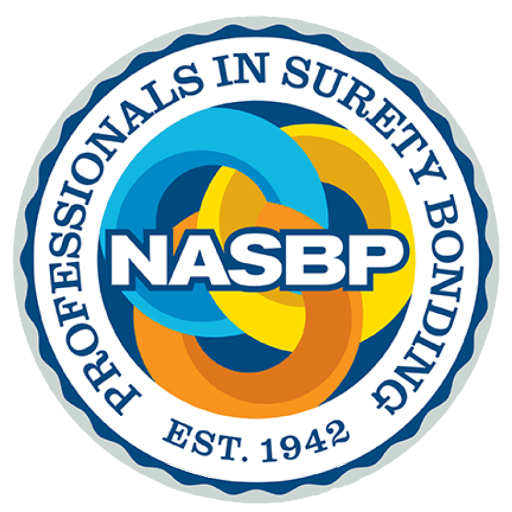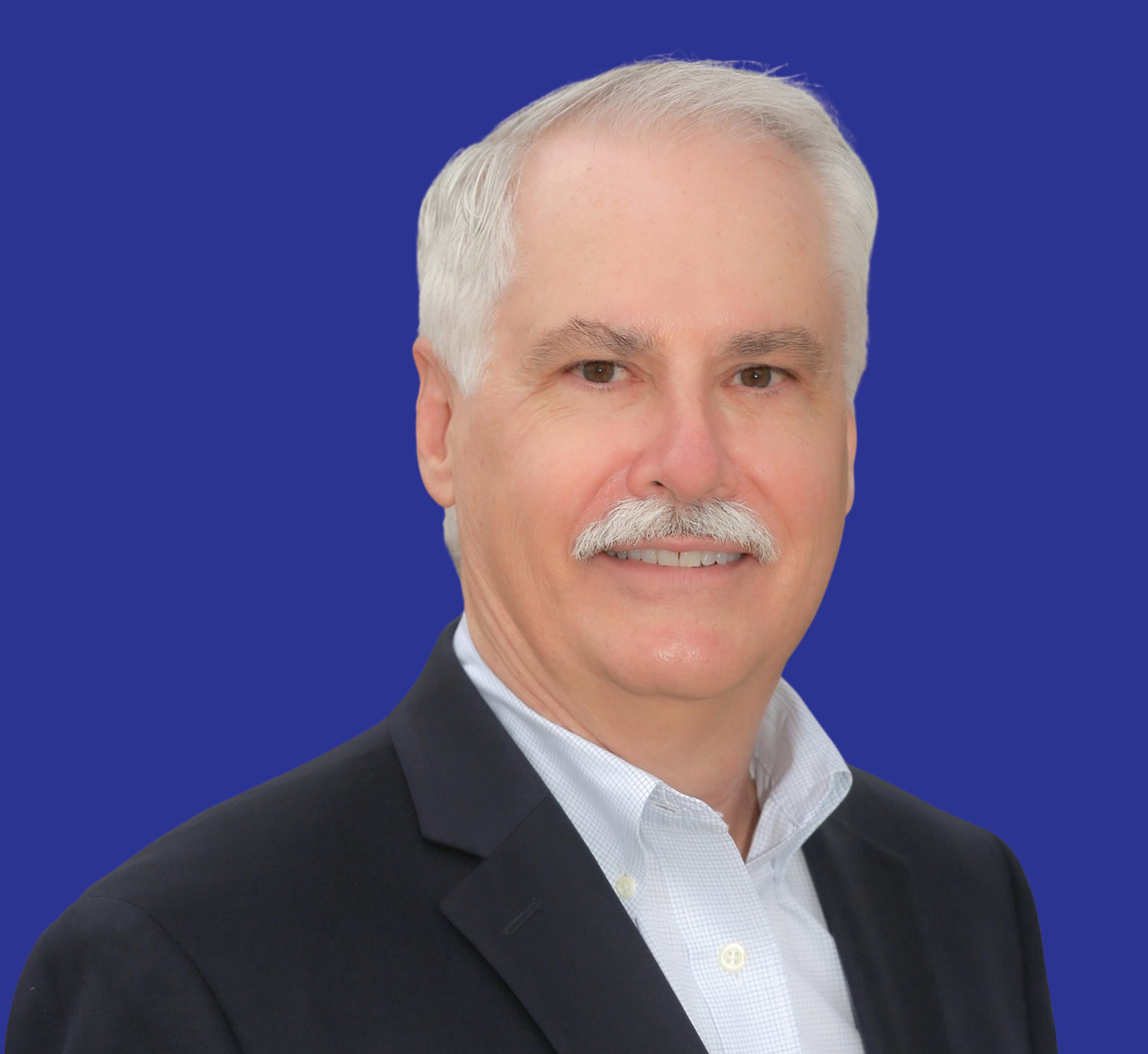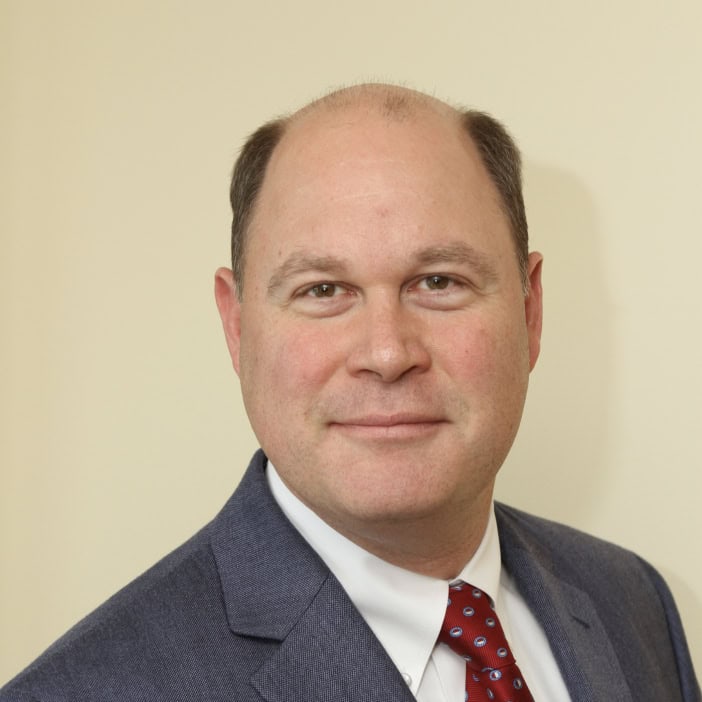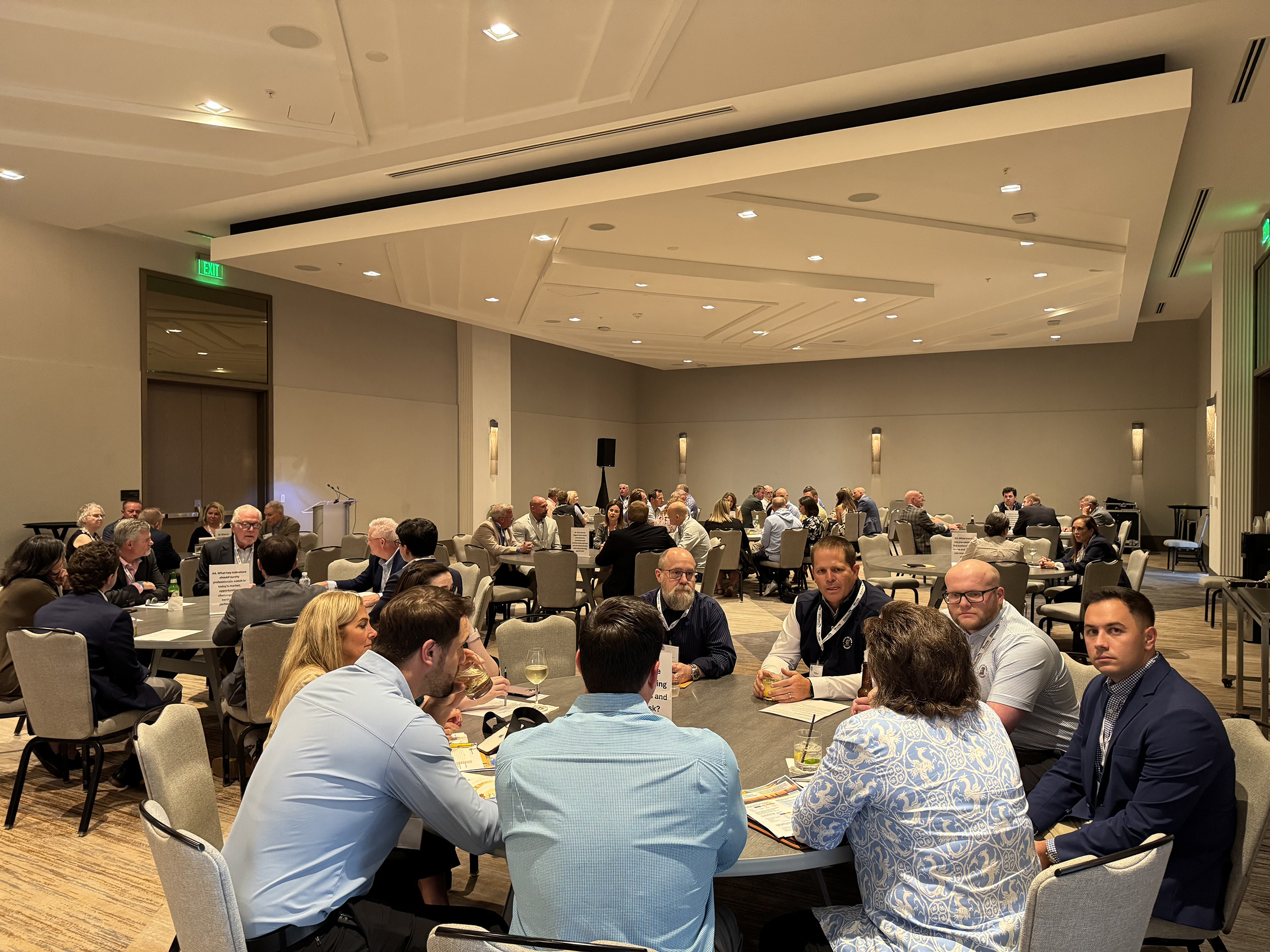Summer 2007
|
|||||
|
What is it about this business that makes us love it?When I was considering ideas to write about this month, my first thought was to discuss the value of the prequalification process in the surety relationship. I tried this out on a longtime client and his first question was whether I was trying to find a cure for insomnia. He then asked why I wanted to write on this particular topic. I told him that it was an important aspect of what sureties do and the value it brought to the construction process. He humored me and said that he was sure that this topic was important but .not what I should be writing about.
He then asked: Sarah, why do you get up every morning and go to work? Why is it you love what you do? I immediately started to consider all of the aspects of why is it we do what we do and love it. Where do I start? While the surety business certainly involves careful financial analysis and getting the paperwork correct, it is in its purest form a people business built upon relationships with clients and all of the people that make a client successful, including their surety. As a surety professional the thing that I love the most is being able to make a difference by providing clients with the advice to make them better at what they do. Tom s company, the client mentioned above, is an example of why I love what I do. A little over five years ago, Tom and three of his close business associates came to visit me with a vision and the start of a plan on how to achieve that vision. They were working for a large company that was not a client of mine and were interested in starting a new venture. They knew they were going to need bonds and insurance which is why they called me, but they also needed assistance in a number of other areas. They needed advice on personnel, contracts, professional advisors, office space, industry trends and a number of related issues. Not only did they need advice, but they also needed something as fundamental as a place to meet and plan their future and someone familiar with their specialty field of construction to bounce ideas off of and keep moving in the right direction. For the months leading up to their start up, I would meet with them to discuss their plans and to make sure we had addressed as many of the concerns and issues we could. Finally, the day came and they made the leap and started their business with less than 10 employees, no contracts but with a professional team that included my agency and a surety interested in working with them. There was a lot to do to get things started. They needed to get work, sign contracts, hire employees and begin to forge a relationship with a surety. At the first year end, things were slower than they expected, but they did make a profit. Now fast forward five years! The company is still around. As a matter of fact, it is thriving with over 200 employees, sales in excess of $45 million and a loyal surety professional and surety that has been with them from the start. The company is considered to be one of the best trade contractors in our region. Their success was hard-earned and well deserved. Of course, Tom and his partners were the ones that made this all happen. But each day I take great personal satisfaction in knowing that I was part of the process and contributed to this company s success. I am sure all of us have experienced a similar situation. Whether it is helping a company when it first starts out, taking a company to a second generation of leadership, or assisting a struggling company stay in business, this is what I love to do and what gets me up in the morning. I know of no other business that provides these unique opportunities and give us all the chance to establish such close relationships with people we consider to be both clients and friends. It is this value that we bring to work every day. It is not only about writing surety bonds but it is about creating success. Sarah Finn is National Surety Vice President of IMA of Colorado, Inc. in Denver, Colorado. She can be reached at sarah.finn@imacorp.com. |
|||||
 |
|||||
|
Consideration and lessening of environmental impacts in all manner of human endeavors is a hot topic these days. Construction is no stranger to the subject. No doubt that you are seeing an increasing number of articles in construction trade publications and from consultants about interest in green construction. The term green is a catch-all word that may mean different things to different people. In the construction context, however, green building often is equated with a focus on sustainability and on building performance by incorporating green criteria into the design, construction, operation, and maintenance of facilities.One set of green building guidelines is developed by the United States Green Building Council in the form of LEED (Leadership in Energy and Environmental Design) guidelines. LEED is a voluntary green building rating system in which projects are eligible for certification based on earning a sufficient number of points in key performance areas, such as in site planning, water conservation and efficiency, energy efficiency, materials and resources utilization, and indoor environmental quality. LEED programs exist for a number of building types, such as homes, schools, retail projects, and new commercial construction, and for building lifecycle stages, such as major renovations, existing building operations and maintenance, and commercial interiors. Through its emphasis on sustainability, efficiency, and consideration of environmental impacts, green building practices offer many potential benefits to building owners, occupants, and the public at large.
To achieve a LEED certification level or rating, decisions and follow-through actions must be made by all members of the project team that is, each principal project participant the owner, the designer, and the constructor will bear some responsibility to achieve the desired outcome or rating. Optimally as some commentators relate the principal project participants engaged on a green building project likely will pursue an integrated approach to the design and construction of the facility. In such an environment, responsibilities may be shared, leaving bright-line distinctions among the respective responsibilities of the parties not always discerned easily. The inclusion of new and innovative techniques and materials and the potential for blending traditional lines of project responsibilities by utilizing a green building approach raises a number of issues. How might green building practices impact underwriting considerations and the liability of contractors and of sureties providing performance bonds? I m not sure that anyone has the exact answers at this point in time, but I do know that there is no time like the present for the surety industry to be thinking about these questions. I cannot help but believe that, in view of public and private owners considerable interest in pursuing green building projects, the surety industry should be proactive, not complacent, in being aware of and examining the issues posed by green construction. To that end, prudent producers and sureties will need to take a careful look at construction contracts incorporating green building requirements. They will have to ascertain that the construction contractor understands the scope of its green building responsibilities and possesses the requisite experience and qualifications to perform the techniques and to work with the new materials called for in the contract. Special attention will need to be paid to the specifications and warranty provisions so that the contractor is not unwittingly agreeing to risk shifting language that ensures that the contractor will warrant certain building performance results or outcomes, especially outcomes that are beyond the scope and control of the contractor. Is the contractor being asked to certify as to the level of recyclable content in a material specified by the architect? Is the contractor being asked to guarantee a certain level of yearly energy savings in the operation of the facility? Are there environmental protection requirements being placed on the shoulders of the contractor that are outside the contractor s control or that exceed existing legal parameters? These are just a few potential red flags; no doubt you will think of and see many more. The key, simply put, is to be prepared to look for and understand the ways in which green building requirements may change the nature of the contractor s undertaking and to assess whether the contractor is in the proper position to manage such undertaking. Recently, a number of states, counties, and municipalities have considered and, in some instances, enacted laws requiring or encouraging green building practices. These laws have taken various approaches. One such law, the Green Building Act of 2006, was enacted at the end of 2006 by the District of Columbia. Among other things, this new DC law incorporates green building requirements, in the form of LEED criteria, into the construction code for public and private construction of a certain size. These requirements will be phased in over a period of years. Of particular interest is a requirement that any party applying for a construction permit provide security, in the form of cash, a letter of credit, or a performance bond, which may be forfeited in the event that the building fails to meet the law s verification requirements. It is evident from a reading of the performance bond requirements contained in the new law that the underwriting and operation of surety bonds was not well understood by the drafters. Due to concerns with such requirements, NASBP and The Surety & Fidelity Association of America (SFAA) recently submitted written comments to the DC Government (which may be accessed by clicking here) and are coordinating efforts with the legislative committee of the Associated General Contractors of Metropolitan DC. If the new DC law is a harbinger of things to come, surety professionals must be poised to offer their expertise to legislators and to clients to sort through issues posed by green building requirements and to ensure that such requirements are not implemented at the expense of the building team and those that provide them surety credit. These materials are provided to NASBP members solely for educational and informational purposes. They are not to be considered the rendering of legal advice in specific cases or to create a lawyer-client relationship. Readers are responsible for obtaining legal advice from their own counsels, and should not act upon any information contained in these materials without such advice. |
|||||
 For the first time NASBP is offering a set of new template forms to members and affiliates to download from the NASBP Producers Tool Kit at www.nasbp.org/toolkit. These new forms are another way NASBP is working to add value by helping members and affiliates expedite obtaining detailed client information. Every business has its tools and the Automation & Technology Committee is proud to offer the Producer’s Toolkit consisting of administrative tools in Word and pdf formats as well as analysis tools in an Excel spreadsheet format, stated NASBP Automation & Technology Committee Chair Dona Lisa Buschmann of ABD Insurance and Financial Services, Inc. in Sacramento, CA.The NASBP Producers Toolkit consists of the following new or revised documents: For the first time NASBP is offering a set of new template forms to members and affiliates to download from the NASBP Producers Tool Kit at www.nasbp.org/toolkit. These new forms are another way NASBP is working to add value by helping members and affiliates expedite obtaining detailed client information. Every business has its tools and the Automation & Technology Committee is proud to offer the Producer’s Toolkit consisting of administrative tools in Word and pdf formats as well as analysis tools in an Excel spreadsheet format, stated NASBP Automation & Technology Committee Chair Dona Lisa Buschmann of ABD Insurance and Financial Services, Inc. in Sacramento, CA.The NASBP Producers Toolkit consists of the following new or revised documents:
1. Revised Contractor Questionnaire download in Word and pdf Once the forms are downloaded in Word or Excel, they can be completed and forwarded on to a client or underwriter for review. Each form has the added convenience of allowing members to customize the forms by inserting a company logo and contact information. We expect that members will utilize the Toolkit items branded with their own agency logo in their day to day operations, added Buschmann. The hard work of the Automation & Technology Committee does not end with this release. The Committee plans to expand the Producers Tool Kit with more template forms in the near future. Additional tools are in the queue and member suggestions for new forms are strongly encouraged, related Buschmann. Template forms in the queue include the following:
For more information about the Producers Tool Kit, contact Dave Golden at dgolden@nasbp.org |
|||||
 |
|||||
| ConsensusDOCS , a coalition representing 20 industry associations including NASBP, has drafted a complete set of balanced, standard form construction industry contracts that are expected to be available for sale as of September 28, 2007.
Remarking on the impending release, NASBP President Sarah Finn said, the new ConsensusDOCS forms represent how the industry as a whole is seeking ways in which it can come together for the betterment of all project stakeholders. Contracts and bond forms exemplifying fair risk allocation and industry best practices are an important focus of bond producers, who advocate individually and legislatively for use of such agreements by and for their clients so they can obtain the bonding capacity needed for their businesses”, she added. The coalition, initially organized under the name of Consensus Industry Contracts Council (CICC), recently changed its name to ConsensusDOCS . A graphic, like the one shown above, will be displayed on each form document, indicating those industry organizations that are endorsers of that particular document. The following organizations participated in the development of various ConsensusDOCS forms: 1. Associated Building Contractors (ABC), Each ConsensusDOCS form was drafted with the philosophy of keeping the project s best interests, rather than a single stakeholder s interest, at the forefront of risk allocation choices. ConsensusDOCS drafters also focused in the forms on addressing the use of and responsibilities surrounding technological innovations, such as electronic communications and Virtual Building Environment, also called Building Information Modeling (BIM). The ConsensusDOCS form library includes a comprehensive suite of standardized bond forms, including performance and payment bond forms coordinated with agreements between contractor and owner (260 and 261), design-builder and owner (470, 471, 472, and 473), and general contractor and subcontractor (706, 707). Prime (262) and subcontractor (760) bid bond forms for agreements also are available. A warranty bond (263) coordinated for the agreements between contractor and owner also is included. Once released, these bond forms along with other ConsensusDOCS forms can be purchased in electronic format at www.ConsensusDOCS.org through a subscription or a la carte system, titled Meter Mode. The diversity of buy-in for these contracts is unprecedented and of historic proportions and reflects a genuine desire by these organizations to develop forms that will assist the construction industry to reach higher productivity levels. |
|||||
| Zurich, one of the world s largest property-casualty insurance companies, recently introduced a new on-line system, titled Surety Bond Validator, that enables U.S. commercial and construction surety bond customers to affirm if a Zurich surety bond is valid in minutes.William E. Cheatham, President of Zurich s Surety Business, said, fraudulent surety bonds have been a concern in the construction and surety industries for some time, and Zurich is responding. Cheatham added that Zurich developed this system to be proactive and to provide a value-added service, stating: Millions of dollars in fraudulent surety bonds have been purchased during the last few years and the problem is growing. Zurich s Surety Bond Validator provides our customers with peace of mind by enabling them to confirm quickly that a Zurich surety bond presented to them is valid.
NASBP Past President Steve Cory of Cory, Tucker, Larrowe, Inc. in Metairie, LA, also believes that systems such as Zurich s are needed for the industry. “As the Gulf Coast recovers from Katrina we have seen numerous fraudulent payment and performance bonds accepted by unwitting public owners, related Cory. It would seem that Zurich’s Bond Validator will provide owners and others a means to easily check the validity of a bond; other companies may want to consider similar systems to protect the integrity of their product,” added Cory. With Zurich s Surety Bond Validator system, an agent, customer or obligee can check the status of a bond and confirm its accuracy by visiting http://www.zurichna.com/surety/bondValidator.nsf/Validate!OpenForm If the bond is not in Zurich’s system, the visitor will receive a notice listing possible reasons why, such as the information entered was incorrect or the bond has not yet been reported to Zurich by the issuing agent. If there is a question about the bond, site visitors, with the click of a button, can ask to be contacted or they can call 800-821-4635 to speak with someone at Zurich who will investigate the bond and respond within 48 hours. |
|||||
| Reservation Deadline for 2007 Regions 1, 2 & 3 Annual Meeting Fast ApproachingLaguna Cliffs Marriott Resort & Spa, Dana Point, CA October 4 – 6, 2007
Click here for Schedule and more information about this Meeting. |
|||||
|
|
|||||
Record-breaking Attendance at the August William J. Angell Surety School Level I ClassesIn August, NASBP held two Level I William J. Angell Surety School classes in Dallas with a breaking-record attendance totaling 71 students.
|
|||||
| Please join NASBP in welcoming Dasha Brock as the new Membership and Database Coordinator. Dasha is responsible for supporting NASBP s membership recruitment and retention activities as well as insuring the integrity of NASBP s database. Her prior work experience includes working at the Associated General Contractors of America (AGC), where she was a past recipient of the AGC Employee of the Year award, and at the Mecklenburg County Court Services. | |||||
| Positions 1) HILB ROGAL & HOBBS (HRH) is the eighth largest insurance brokerage firm in the United States, with over 125 offices throughout the nation. We at HRH help clients manage their risks in property and casualty, employee benefits, professional liability and other areas of specialized exposure. In addition, HRH offers a full range of personal and corporate financial products and services.Location: Lombard, Illinois Position: Senior Bond Specialist in Bond Department Description: To provide technical and sales support in processing and issuance of surety bonds in accordance with the objectives and procedures outlined by Hilb Rogal & Hobbs. Responsible to the Assistant P&C Practice Leader. Works with Producers, Account Executives and other unit personnel. Job Classification: 22 Status: Exempt Responsibilities:
Requirements:
Contact: Lucy Bischoff 2) OHIO CASUALTY INSURANCE COMPANY Ohio Casualty is an EOE. Location: Hamilton, OH Responsibilities:
Requirements:
Contact: Lindsey Bringman Interested candidates should apply online at www.ocas.com 3) CAPITOL INSURANCE COMPANIES Capitol Insurance Companies is an EOE. Location: Near Madison (Middleton), WI. Description: Meet corporate objectives for the Capitol Insurance Companies Commercial Surety and Fidelity department by maintaining final accountability within the mid-west region. Perfect next step for a current Senior Underwriter! Responsibilities:
Requirements:
Contact: fax resume to 608-829-7409 Hayley L. Hellenbrand Visit www.capitolindemnity.com for more company information. 4) CNA SURETY CORPORATION, one of the largest U.S. surety companies, currently has underwriting opportunities in the following two locations. CNA Surety Corporation is an EOE. 4a) Location: Farmington Hills, MI Responsibilities:
Requirements:
4b) Location: Seattle, WA Responsibilities:
Requirements:
Contact: fax resume to 312-817-1759 Alison Hitpas |
|||||
|
|
|||||
| PassingJohn F. Wood, former Vice President of Garner, Meshad & Wood Agency of Birmingham, Alabama passed away July 19th at age 73. John was also a former Alabama bond manager for United States Fidelity & Guaranty Co. He was president of Sedgwick James of Alabama until he retired in 1998. John was active in NASBP serving on committees for many years. | |||||
| The American Arbitration Association (AAA) recently posted written procedures on how arbitration of construction claims of any amount can be resolved in as fast as 60 days using the AAA s Fast Track Procedures.For years, NASBP has been a participating member of AAA s National Construction Dispute Resolution Committee (NCDRC), which sponsors the arbitration and mediation procedures specially designed for construction disputes. NASBP supports AAA s effort to more widely disseminate educational materials about dispute resolution processes.
The Fast Track procedures under the AAA’s Construction Industry Arbitration Rules and Mediation Procedures were designed for cases involving claims of $75,000 or less. However, by agreement of the parties, these fast track procedures can be used for construction cases of any amount. The benefits of Fast Track procedures include:
For more information about the Fast Track procedures click here, or contact AAA customer service at 1-800-778-7879 or Websitemail@adr.org |
|||||
The Department of the Treasury’s Listing of Approved Sureties (Department Circular 570) has been updated to reflect:
For a complete listing of all states where these companies are licensed to transact surety business, please refer to the Circular 570 at: http://fms.treas.gov/c570/c570.html and |
|||||
| The U.S. Department of the Treasury, Financial Management Service (FMS) recently reported that certain certified sureties have been improperly using the FMS logo on their web sites and providing a link to the FMS Surety Bond web site as part of their marketing efforts. The FMS states that this practice should be discontinued immediately.Sureties listed on the U.S. Department of the Treasury, FMS Circular 570 have been issued certificates of authority by FMS to write and reinsure Federal bonds. Federal bond-approving officials throughout the Federal government consult Circular 570 to verify certification status, per bond underwriting limitation, and other pertinent information when they are presented with bonds for acceptance.
The FMS reminds sureties that the Federal statute, 31 U.S.C. 333(a), prohibits the use of the FMS name, symbol or emblem in a manner “which could reasonably be interpreted . . . as conveying the false impression” that a particular business activity or product is endorsed by FMS. The use of the FMS logo on a surety web site may create the mistaken impression that the FMS favors or endorses the products of one particular surety over the products of other sureties listed on Circular 570. In addition, the FMS has not yet finalized its external linking guidance so the use of links at this time is not authorized. As an alternative, the FMS states that certified sureties may post information on their web sites using the following model language: “The (company) maintains a certificate of authority issued by the U.S. Department of the Treasury, Financial Management Service (FMS) to write and reinsure Federal bonds. Confirmation of FMS certification status (listing of the company on Circular 570, published by FMS), authorized per bond underwriting limitation, and other details can be obtained at the following web site: www.fms.treas.gov./c570. This notice, and the listing of the company on Circular 570, does not constitute an endorsement or recommendation by FMS of one company over other sureties listed on Circular 570.” If you have any questions, contact the Surety Bond Branch at 202-874-6850 or Surety.Bonds@fms.treas.gov. |
|||||
| SIO s 2007 ENR Surety Supplement Now AvailableSIO s annual surety supplement in Engineering News-Record – one of the most popular and valuable products for private construction project owners, developers, and contractors – was published June 18, 2007, and reprints are now available via the SIO Web site. Or, download a PDF now.
In addition to an overview of the surety market and Executive Viewpoints, this edition covers such topics as mega construction projects and the owner s role in the claims process. The surety supplement would not be possible without the commitment and advertising support by the surety executives who also provided the wealth of information used to create this superior tool to benefit the surety industry. Thanks to all who participated! SIO Adds New CD to Banker Toolbox SIO has developed a CD especially for bankers and lenders. Surety Bonds: A Guide for Lenders features a one-hour Webinar, Banking and Bonding: How to Mitigate Construction Risk, which SIO developed for the Risk Management Association (RMA). The Webinar features Ed Heine, Payne Financial Group, and Gary Dunbar, Great American Insurance Co. The CD includes two PowerPoint presentations, Managing the Surety Claims Process and Case in Point: Surety s Involvement Saves Projects, and links to resources such as Contract Surety Bonds: Protecting Your Investment. Order the CD today, then schedule a meeting with a banker or lender to explain the value of requiring a surety bond as a condition of the construction loan. You also can view the CD online. The CD is the latest addition to a number of SIO products and articles available especially for bankers and lenders including:
|
Get Important Surety Industry News & Info
Keep up with the latest industry news and NASBP programs, events, and activities by subscribing to NASBP SmartBrief.








